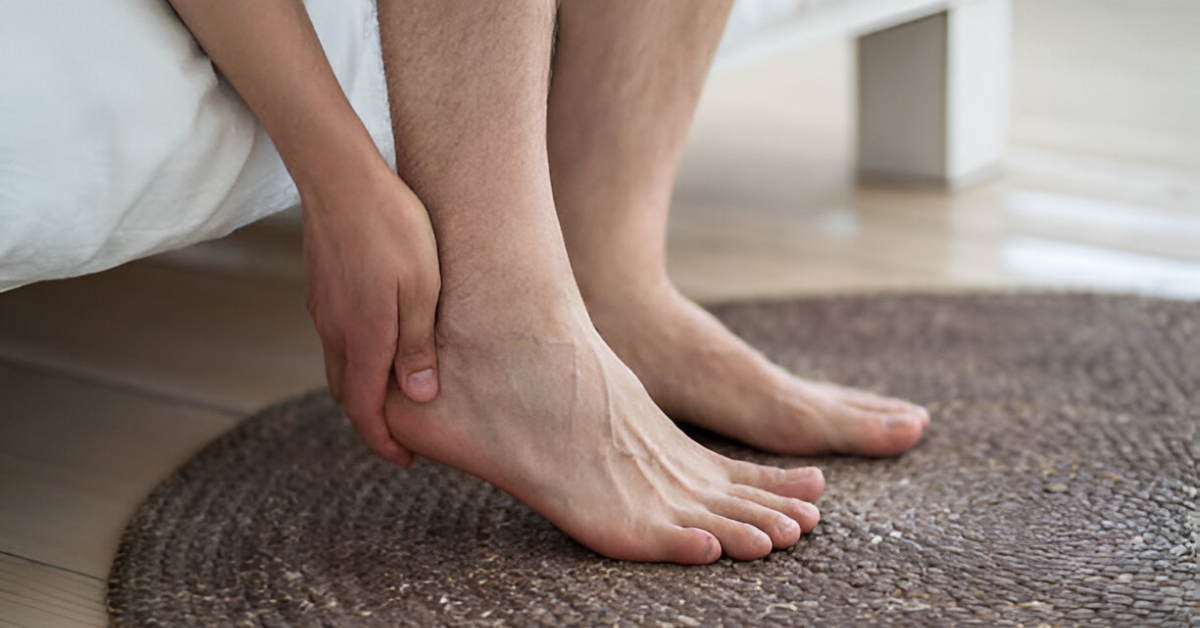If you’re living with diabetes and have started noticing pain in your heel, it’s not something to ignore. Diabetic heel pain can signal underlying issues that need attention to prevent complications.
At Sole Foot and Ankle, we see many patients with heel pain related to diabetes, and we know how important it is to get answers early. Here’s what you need to know.
Key Takeaways
- Diabetic heel pain can stem from nerve damage (neuropathy), poor circulation, or pressure on the foot.
- Common causes include plantar fasciitis, diabetic neuropathy, and heel ulcers.
- Early care helps prevent infections and more serious complications.
- Proper footwear, regular foot checks, and podiatric care are key.
- See a podiatrist if heel pain persists, worsens, or is accompanied by swelling or sores.
Why Does Diabetes Cause Heel Pain?
Diabetes affects the feet in several ways. High blood sugar over time can lead to:
- Nerve Damage (Diabetic Neuropathy)
This is one of the most common causes of diabetic foot pain. It can cause burning, tingling, numbness, or sharp pains in the heel.
- Poor Circulation (Peripheral Artery Disease)
Reduced blood flow makes it harder for your feet to heal from minor injuries, leading to pain and potential infections.
- Pressure and Skin Breakdown
High-pressure areas like the heel are prone to cracks, calluses, and ulcers in people with diabetes.
Common Causes of Diabetic Heel Pain
| Condition | Symptoms | Why It’s a Concern With Diabetes |
|---|---|---|
| Plantar Fasciitis | Sharp pain in the heel, worse in the morning | Slow healing and risk of tissue damage |
| Diabetic Neuropathy | Burning, tingling, or stabbing pain | May lead to unnoticed injuries |
| Heel Ulcers | Open sores or wounds on the heel | High risk of infection and complications |
| Charcot Foot | Swelling, redness, warmth in the heel/foot | Can lead to bone and joint collapse |
Diabetic Heel Pain Warning Signs to Watch For
If you have diabetes and heel pain, call your podiatrist if you notice:
- Persistent or worsening pain
- Swelling or redness
- Warmth in the heel area
- Numbness or tingling
- Open sores, blisters, or cracks that don’t heal
- Changes in skin color (pale, blue, or very dark)
Early intervention can help prevent infections, ulcers, and even amputations.

How to Manage Diabetic Heel Pain
At-Home Care
- Keep blood sugar levels under control.
- Wear supportive shoes with cushioning for the heel.
- Avoid walking barefoot, even indoors.
- Do gentle foot stretches if recommended by your doctor.
- Inspect your feet daily for cuts, redness, or swelling.
Professional Treatments at Sole Foot and Ankle
At our Valparaiso clinic, we offer:
- Custom orthotics to offload pressure from the heel
- Diabetic foot care plans to prevent complications
- Wound care for ulcers or cracks
- Laser therapy for pain relief and healing support
- Advanced treatments for neuropathy and circulation issues
When to See a Podiatrist
Do not wait for heel pain to worsen. Even small problems can escalate quickly with diabetes. At Sole Foot and Ankle, Dr. Harpreet Minhas provides personalized care for diabetic foot concerns—helping you stay active and pain-free.
A Note from Sole Foot and Ankle
Diabetic heel pain should never be ignored. The sooner you get it checked, the easier it is to treat. Call us today at 219‑464‑9588 or schedule an appointment online. We are here to help you protect your feet for years to come.



